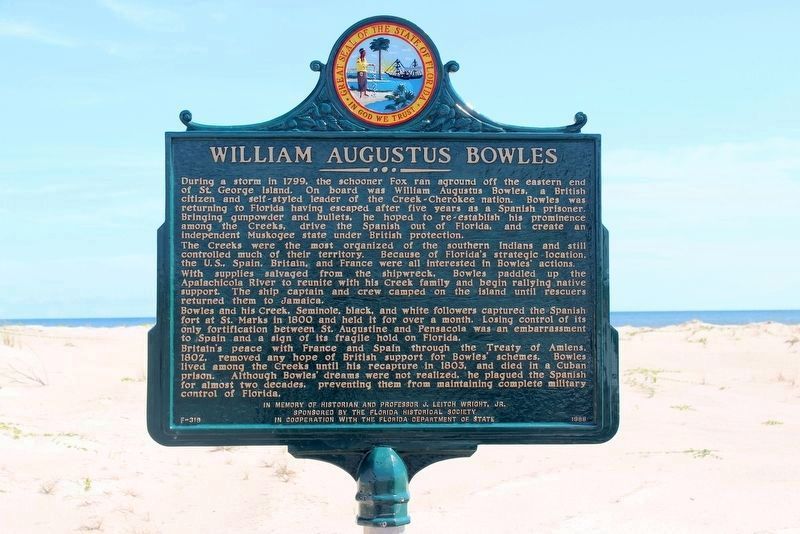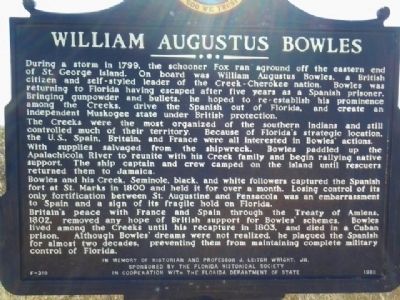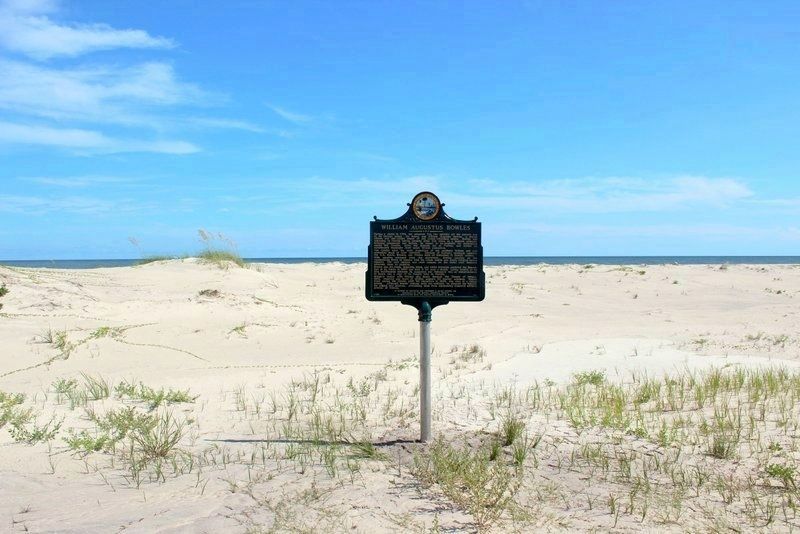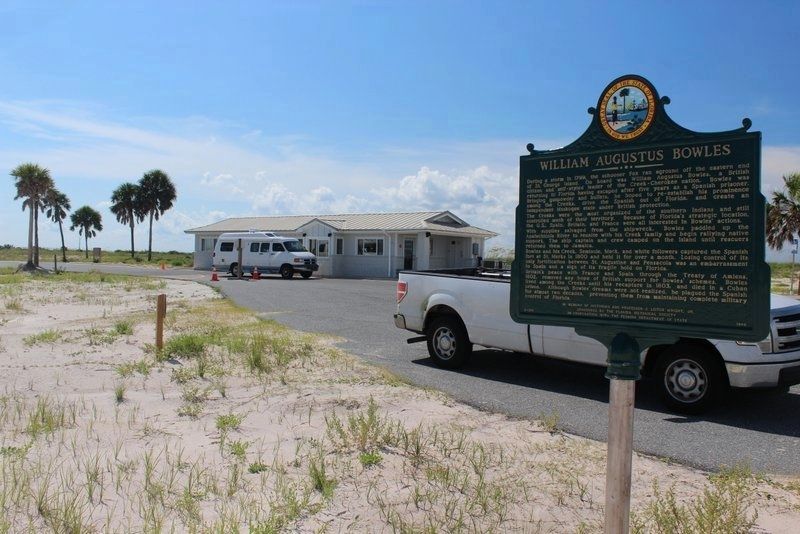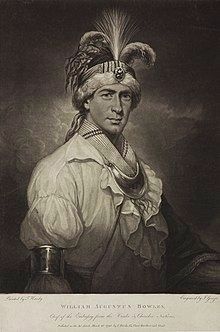William Augustus Bowles
The Creeks were the most organized of the southern Indians and still controlled much of their territory. Because of Florida's strategic location, the U.S., Spain, Britain, and France were all interested in Bowles' actions.
With supplies salvaged from the shipwreck, Bowles paddled up the Apalachicola River to reunite with his Creek family and begin rallying native support. The ship captain and crew camped on the island until rescuers returned them to Jamaica.
Bowles and his Creek, Seminole, black, and white followers captured the Spanish fort at St. Marks in 1800 and held it for over a month. Losing control of its only fortification between St. Augustine and Pensacola was an embarrassment to Spain and a sign of its fragile hold on Florida.
Britain's peace with France and Spain through the Treaty of Amiens, 1802, removed any hope of British support for Bowles' schemes. Bowles lived among the Creeks until his recapture
in 1803, and died in a Cuban prison. Although Bowles' dreams were not realized, he plagued the Spanish for almost two decades, preventing them from maintaining complete military control of Florida.Erected 1988 by Florida Historical Society. (Marker Number F-319.)
Topics. This historical marker is listed in these topic lists: Colonial Era • Forts and Castles • Native Americans • Settlements & Settlers. A significant historical year for this entry is 1799.
Location. 29° 41.088′ N, 84° 47.689′ W. Marker is near St. George Island, Florida, in Franklin County. Marker is on E Gulf Beach Dr,. Inside St. George Island State Park, in small parking lot near entrance building. Touch for map. Marker is at or near this postal address: 1900 E Gulf Beach Dr,, Eastpoint FL 32328, United States of America. Touch for directions.
Other nearby markers. At least 8 other markers are within 12 miles of this marker, measured as the crow flies. Crooked River Lighthouse History (approx. 11.4 miles away); Franklin County (approx. 11.6 miles away); Camp Gordon Johnston Training Area (approx. 11.7 miles away); When the River Was King! (approx. 11.7 miles away); World War II D-Day Training Site (approx. 11.7 miles away); Fort Coombs - Franklin Guards (approx. 11.8 miles away); Dr. John Gorrie (approx. 11.8 miles away); Trinity Episcopal Church (approx. 11.8 miles away).
Also see . . . William Augustus Bowles. Wikipedia biography. (Submitted on September 21, 2020, by Larry Gertner of New York, New York.)
Additional keywords. Spanish Florida, Gulf Coast, Creek, Cherokee, Seminole
Credits. This page was last revised on September 21, 2020. It was originally submitted on February 15, 2012. This page has been viewed 1,199 times since then and 49 times this year. Photos: 1. submitted on August 7, 2019, by Tim Fillmon of Webster, Florida. 2. submitted on February 15, 2012. 3, 4. submitted on August 7, 2019, by Tim Fillmon of Webster, Florida. 5. submitted on September 21, 2020, by Larry Gertner of New York, New York. • Bill Pfingsten was the editor who published this page.
